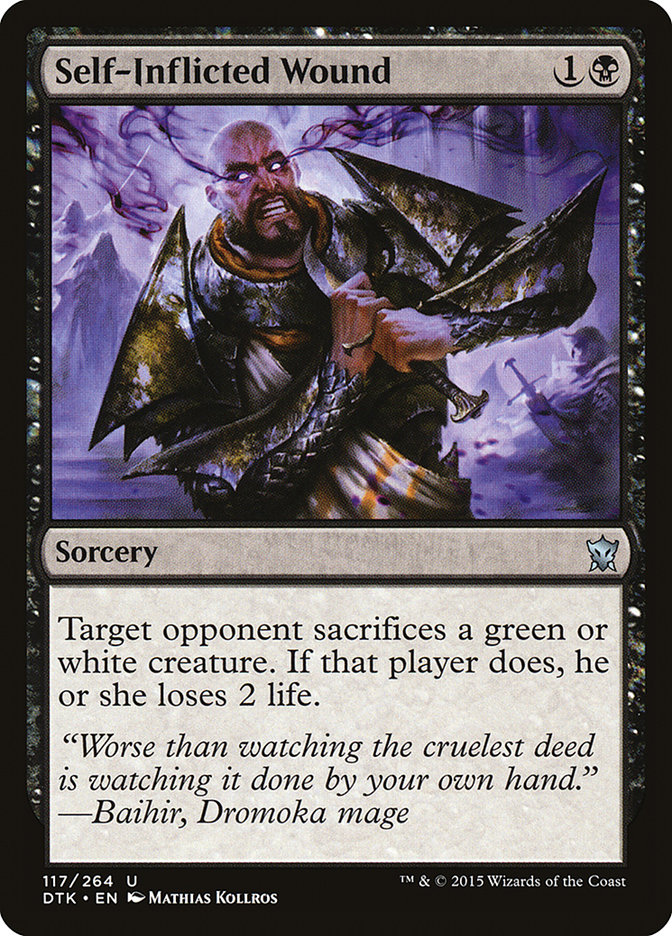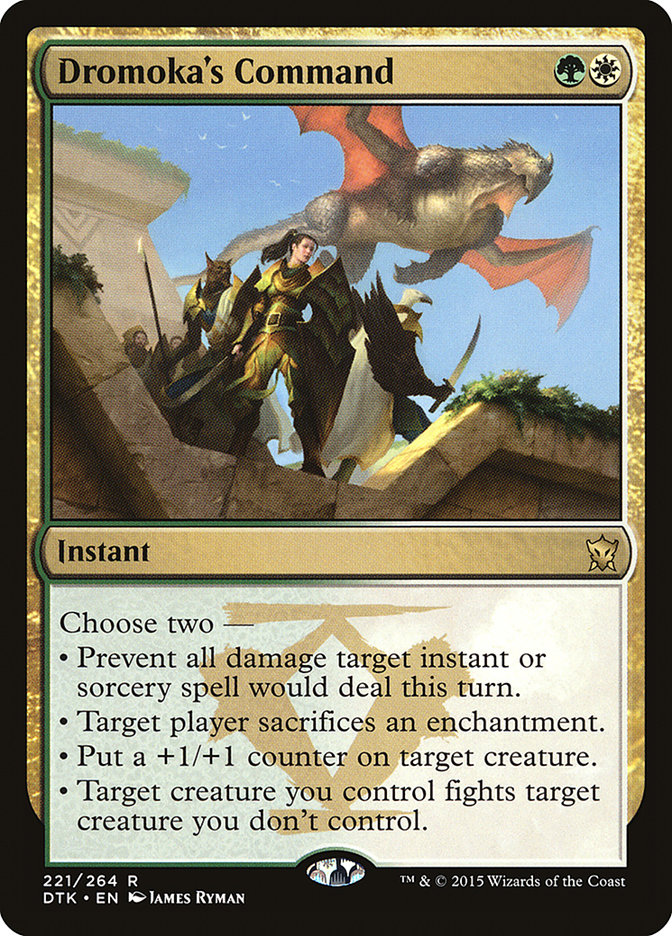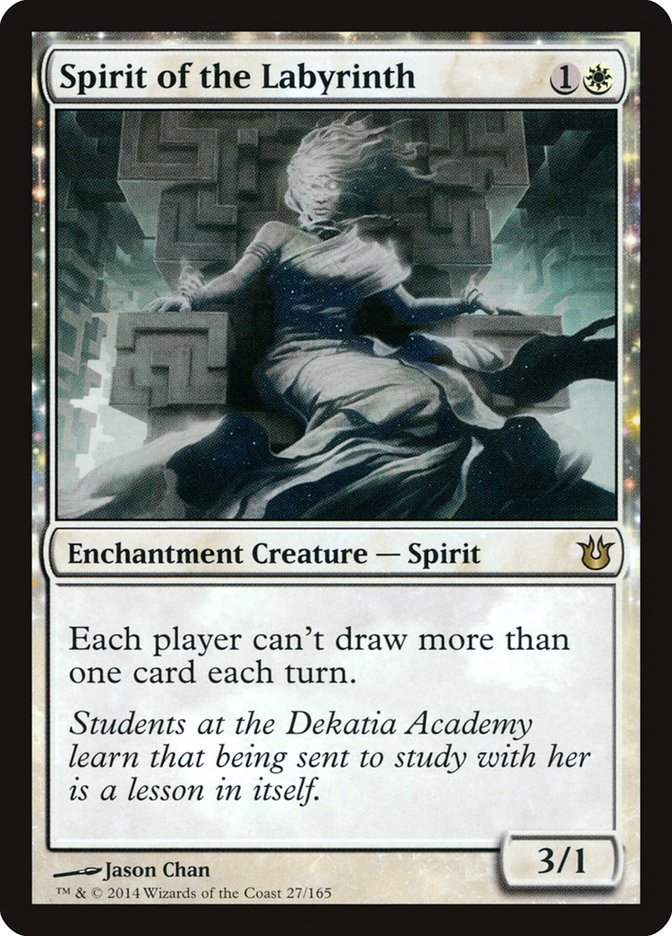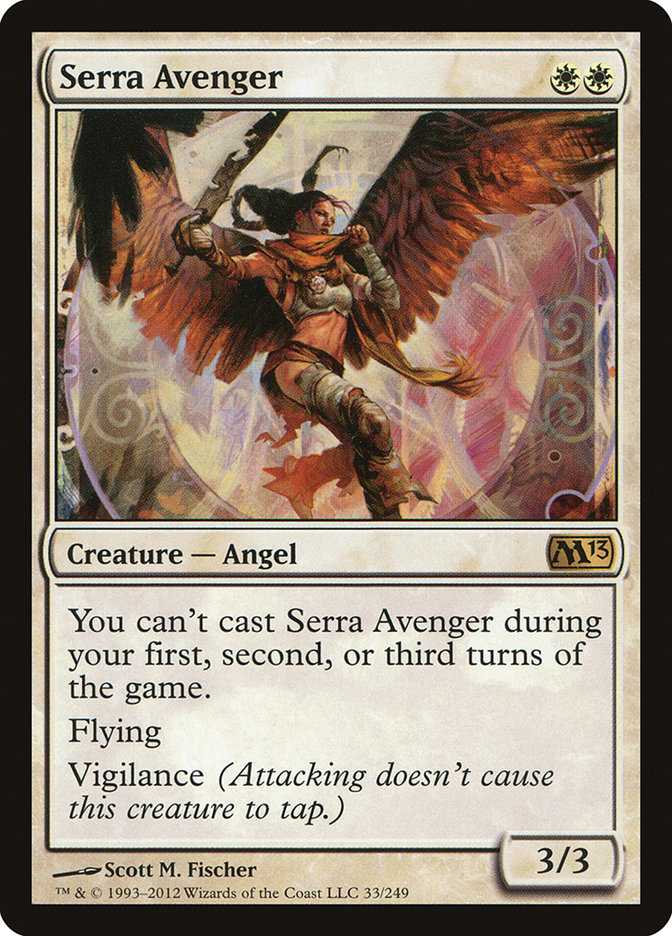The Invitational seems like a lifetime ago at this point, but I do want to give a quick rundown of my adventures, as well as general impressions of the
formats I played two weekends back. The feedback I got for my previous work was very kind, and although
I’ve been doing the Single Card Spotlight schtick for a while now, it seems like the columns I do that touch just outside of strategy and into Magic
culture always get a greater response. I don’t know that I can be inspired by such subjects often enough to keep the boat afloat, but I did want to take a
second to express thanks. Perhaps I’ll return in two weeks with another interesting and mostly unrepresented Magic topic, but for now, here’s a brief
catchup of everything that’s gone on since we last met.
On Standard
I was in a weird position going into the event. I knew I wanted to play Abzan. Historically, Abzan colors have been my preference, and as I said a few
weeks back, it’s important to simply play what you’ll enjoy if you don’t have time to test much due to adulthood and all that. Playing what you know at The
Invitational was doubly important since it was the first day of the format anyway, and aside from the pros who have been working on the Pro Tour since
spoiler season, nobody really knew what they were doing beyond the things they’d already done for months.
I wanted to give myself the best shot by playing an aggro deck that reduced decision-making trees, but at the same time, Abzan Control decks were the only
thing I had really played since Khans was released back in the winter of last year.
Ultimately, I decided I’d play both.
Creatures (9)
Planeswalkers (3)
Lands (26)
Spells (22)

I scrubbed out of The Invitational pretty immediately, though most of the games were close. I actually still like the strategy I came up with, essentially
Brad Nelsoning harder than anyone had ever Brad Nelsoned before. I’m horrific about oversideboarding sometimes, and playing two decks seemed like a great
way to gain an advantage in sideboarded games without just boarding incorrectly or getting punished by random matchup dynamics I couldn’t have known about
without putting in a lot of hours. Brad and the bunch popularized the idea by sideboarding into Fleecemane Lions a few weeks ago, and I just took it a step
further. Actually, I took it about five steps further.
The biggest flaw in this plan was the unbelievable amount of flexibility some of the new hate cards from Dragons of Tarkir carry. It doesn’t really matter
if you have a quick Fleecemane Lion or a lategame Siege Rhino-it’s still pretty easy to get absolutely blown out by a Self-Inflicted Wound. Dromoka’s
Command was similarly rough; boarding in two on the aggro plan is great unless your opponent is playing four already. The kneejerk analysis is that this
deck was two bad decks instead of one cohesive one, but I honestly don’t even think it’s an issue with its philosophy so much as how I constructed it. For
instance, one of the few “true” sideboard cards I wielded was Drown in Sorrow because I expected token decks to be more relevant. All of my matches were
either against Abzan Aggro or a Dig Through Time control deck, meaning that my sideboard plan was mostly worthless because I’d prefer to be in the control
configuration every time. All I did was forfeit sideboard slots.
I also agonized over my Thoughtseize count. It’s obviously mostly terrible if the field is on Mono-Red, but it’s pretty huge in control mirrors. The field
seemed to have relatively equal amounts of these, so who knows. This is the first time I’ve effectively had a large important event double as my Prerelease
for a set, and I feel like the general vibe in the room was one of hope: Nobody really felt confident in what they were doing, so they just made minor
updates to the older archetypes. I like the giant unknown factor, but it does make for a lot of guesswork. The only real Standard pat on the back I had was
multiple opponents having difficulty deciding how they should’ve sideboarded against me after seeing my entire plan. Their Negates were especially sketchy.
Ultimately, I have no regrets. The room was full of talented players, and I needed to take a pretty huge swing at a pretty unknown format in order to
succeed. I definitely made one or two minor mistakes in my second round that cost me at least one game, but at the end of the day, my relatively
conservative strategy was still unorthadox enough to punish me. And honestly, now that I’ll be playing mostly IQs and local events, I’ll probably still
play this deck. I think it’s a fine 75 to get an edge with in a room full of inexperienced or casual-level players-I just wouldn’t take it to an
Invitational again.
As a last parting thought, despite the general consensus that Courser of Kruphix is the right three-drop in the new breed of aggressive Dragon decks
popularized by CVM and Anthony Lowry, Dromoka’s Command may finally be the card that makes Courser of Kruphix seem actively horrible in certain gamestates.
It’s still the right card for the slot for the moment, but nevertheless, I’ve never seen the card look so directly foolish against another spell before
now.
On Legacy
As for Legacy, that went much better. I played the same list I posted previously, card-for-card.
Creatures (23)
- 4 Mother of Runes
- 2 Gaddock Teeg
- 4 Knight of the Reliquary
- 2 Qasali Pridemage
- 2 Stoneforge Mystic
- 1 Scavenging Ooze
- 4 Thalia, Guardian of Thraben
- 4 Deathrite Shaman
Lands (24)
Spells (13)

I played in the IQ on Sunday (wanting to so badly that I skipped The Standard Open entirely; I didn’t want to do well and be forced to drop for Legacy, and
believe me, I’d have done it). I died pretty late in the event and had a lot of interesting matchups. This deck is very similar to the one my good friend
David McDarby used to take down the 2014 Portland Legacy Open. That deck, in turn, was designed by the great Glenn Jones, and aside from some sideboard
adjustments, it’s nearly identical to the list he’s been using for a while now.
I must confess that I do miss the Maze of Ith and Scryb Ranger tricks that the now-extinct G/W Maverick decks could afford to play, but there’s no denying
how much this deck needs Deathrite Shaman and Abrupt Decay to reasonably compete. Abrupt Decay is so invaluable in so many scenarios (one such event
occurred when I popped my own Thalia to save myself from Bridge From Below). Dryad Arbor has a lot of play to it as well (nice Liliana), but I still miss
the forgotten role players.
I played (and lost) to Miracles twice, including against eventual top 4 competitor Shawn French.
Creatures (3)
Planeswalkers (3)
Lands (21)
Spells (33)

The Shawn match was maybe the most fun I had all tournament. I couldn’t help but feel that we were pretty close in skill level, and we were both pretty
quippy and loose the entire time. Lots of guessing of spells before they were cast, lots of sarcastic remarks, lots of lying to one another without being
able to maintain a straight face. I liked seeing that Shawn succeeded with a good finish since he’s the exact sort of tournament opponent I love playing
against.
The Miracles games felt relatively close. And I mean “at parity” close, not “they were at two life but somehow I lost and I don’t know what I’m talking
about” close. Sword of War and Peace was positively stellar, but if you expect Miracles to be a big part of your gauntlet any given Sunday (spoiler: it’s
going to be), a Choke or two will probably be necessary if you’re going to fight the fair fight like me. I opted for more graveyard interaction, though I
only played against a single graveyard deck. If I was to play the event again, I’d trade out a Surgical Extraction for a Choke, but after that, I’d just be
speculating my matchups. Legacy is Legacy. You have to give up percentage somewhere.
Most of my wins were against Delver decks. Maverick may be a new shade of black compared to the old days, but it still wants to play against Delver. Temur
still seems the easiest, but Sultai is pretty manageable as long as your answers don’t line up in all the wrong ways. It should be noted, however, that not
all Sultai opponents are created equal. My final loss of the event came at the hands of a very personable player, who despite being ten seconds late for
the round-a game loss resulted-took full responsibility for being late before beating the hell out of me with a host of Sultai cards that don’t die to
Abrupt Decay.
The next time there’s a huge Legacy event run by SCG, I’ll be happy to provide an in-depth primer on the deck. I ran into several people at the event that
wanted to talk about it and who were actively working on assembling it. The very best advice I can give about the deck from a general perspective is that
you need to actively enjoy playing this sort of deck. It’s not a deck you build because you’re trying to spike events. Don’t get me wrong, it’s great, but
a teacher once told me that teaching is something you have to inherently enjoy. If that’s not the case, you’ll be terrible at it. Maverick is the same sort
of thing. If it’s something you’ll enjoy inherently, you’ll get a lot of love out of playing it, but it certainly isn’t for everyone.
Speaking of sweet decks…
I wanted to provide people with the deck my good friend and former Legacy Open winner (all of my friends have won Legacy Opens/Premier IQs) Travis Gibson
has been working on for years now. Though I wouldn’t be caught dead playing Daze (I find voluntary mana denial to be loathesome in every regard), he’s
found a ton of success with it. Behold!
Creatures (19)
- 4 Mother of Runes
- 2 Weathered Wayfarer
- 4 Serra Avenger
- 1 Vendilion Clique
- 4 Stoneforge Mystic
- 3 True-Name Nemesis
- 1 Brimaz, King of Oreskos
Lands (18)
Spells (23)

This deck provides you with some of the best weapons from several Legacy strategies: the little guys + mana destruction of Death and Taxes, the classic
Stoneforge Mystic insta-win, and the earlygame control that comes with Spell Pierce and Daze. The list I’ve provided is from memory, and it should be noted
that Travis changed this deck by a card or two about every three hours. Again, this has been going on for years.
The most important breakthrough he had was substituting out Spirit of the Labyrinths for Serra Avengers.
Spirit was originally an excellent blowout that allowed you to completely hose someone with Cephalid Coliseum. Once threshold was up, you could tutor for
it using Weathered Wayfarer, which was nearly always active thanks to Daze, and make your own Mind Twist. It was a great trick, but sadly, the Spirit just
died all the time. The evasion on Serra Avenger combined with her ability to survive Zealous Persecution made her unbelievably better.
Travis and I had the same record throughout the tournament, but we somehow dodged one another. The day before, we were paired in round 1 of a win-a-box.
Nice beats.
If you’re a fan of subtle synergy and tempo Magic, there aren’t a lot of decks that will give you the flexibility this one will. A word to the wise though:
Death and Taxes will kick your teeth in. Against most of the field, you’re a highly malleable deck that can play aggro or control. You can disrupt combo
and set whatever gameplan in motion you think is best. Against Death and Taxes, you’re a bad Death and Taxes deck, and they will positively murder you.
On Commander (Tuck Discussion #10,000)
I was going to devote a column to the tuck business, but mercifully, Sean McKeown beat me to it. There really isn’t anything I can say on the subject that he didn’t
already say more brilliantly. But to sum up:
Commander players have got to stop acting like this format should be treated the exact same way as other sanctioned formats. The Commander Rules Committee
is great for keeping players on the same page at events and in global settings with lots of different playgroups coming together. But this is not Standard.
This is not Legacy. If you play with 103 cards in your Commander deck, Sheldon Menery isn’t going to burst through the door and DQ you. If you and your
friends agree that Planeswalkers can be used as commanders, your living room isn’t going to explode. If you play Commander with a boatload of different
strangers on a regular basis for some reason and you’re really that uncomfortable with the rule change, then all the pity in the world to you. But so many
of those that are up in arms are only playing with a handful of other players on a regular basis. If you guys want to keep the rule, keep it. And if you
don’t, don’t.
If I don’t like playing against Griselbrand in Legacy, I’m all out of luck if my opponent has it. If I don’t like playing against Kaalia or Derevi at my
local shop, all I have to do is get up.
You’re not a slave to these rules. You’re not even a slave to traditional Magic goals when you play Commander. 99% of the time winning doesn’t even matter.
Magic has undergone a tremendous amount of changes over the years. Creating petitions is your right, but imagine if all the changes in the game got flipped
immediately just because some number of people decided they didn’t like them. We wouldn’t have Planeswalkers. We wouldn’t have a lot of things the game
needed to stay alive. How long did the new wedge names drama last when Khans of Tarkir was released? A day?
Reflexive outcry becomes very dangerous when we need the credibility to get policies reversed that need to be reversed, stuff like that
Planeswalker Points overhaul we helped get thrown out. We become the community that cried wolf.
The criticisms against the change are valid, but they’re also subjective. This isn’t a change you have to deal with if you don’t want to a vast majority of
the time. If you’re at a pod in a Grand Prix with six strangers, yeah, you need to obey the rule change. But if the two or three players you hang out with
every week don’t want to change, then don’t. Govern yourselves and stop treating the format like it’s somehow tournament-relevant or begging to be 100%
uniform. Last time I checked, it’s still technically a “casual” format. So act casual.
That ends our correspondence for another two weeks. I don’t know that it will be all that related to the topic I’m planning on for next time, but I
desperately need to find a way to squeeze in my updated Tolsimir Wolfblood list for the hardcores. Where there’s a wolf, there’s a way.
Have fun at #SCGStates this weekend!







